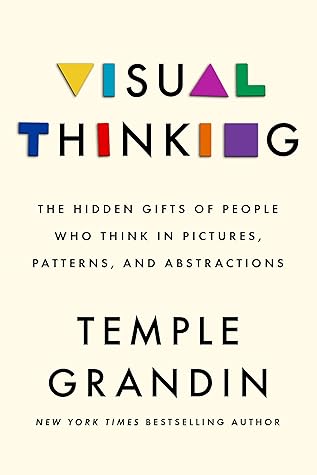More on this book
Community
Kindle Notes & Highlights
Read between
October 7 - October 9, 2023
We come into the world without words.
philosopher René Descartes cast a long shadow when he wrote, “I think, therefore I am.”
I’m in demand in my field because of the way I see things. Details, no matter how small, jump out at me.
Imagine a world with no artists, industrial designers, or inventors.
we’ll explore the intersection of genius, neurodiversity, and visual thinking.
Having a visual thinker on your team could make all the difference.
visual thinking, like most traits, exists on a spectrum.
want us collectively, as citizens of the world, to reclaim our ability to create and innovate in a rapidly changing world, recognizing what we gain by harnessing the power of every kind of mind.
world could be roughly divided into two kinds of thinkers: people who think in pictures and patterns (more on the difference later), and people who think in words.
Verbal thinkers talk to themselves silently, also known as self-talk, to organize their world.
they are linear thinkers and need to connect thoughts in a beginning-middle-end sequence.
Pictures are associational, sentences go in order.
if you made the person with the messy pile organize those papers, he or she would never find anything again. Such people know where everything is. For them, the “mess” is organized. They see it in their mind’s eye.
Autism Research Centre at Cambridge, puts forth a fascinating theory in his book The Pattern Seekers: How Autism Drives Human Invention, in
computer scientist and mathematician Grace Murray Hopper took apart all seven of the clocks in her family home.
Here’s the test: You buy a piece of furniture and are ready to put it together: Do you read the instructions or follow the pictures?
Linda Silverman’s “Visual-Spatial Identifier,”
Silverman calls “auditory sequential” thinkers (language based) and “visual spatial” (picture based).
eighteen questions on the Visual-Spatial Identifier. If you answer yes to ten or more of the questions, you are very likely to be a visual-spatial learner.
“Fitting in” is a complicated business.
in searching for fellow visual thinkers through my survey, I was also searching for my tribe.
The New Normal These days, “neurotypical” has replaced the term “normal.” Neurotypicals are generally described as people whose development happens in predictable ways at predictable times.
Musk is off the charts. Not long ago, when he hosted Saturday Night Live, he revealed that he has Asperger’s syndrome.
It explained why we collaborated so well and got along. We spoke the same language.
The Strange Worlds of Aphantasia
aphantasia has no or almost no visual imagery.
Verbal thinkers tend to use top-down thinking, which is like doing an internet search using one keyword.
Curiosity is all you need,
One of the most useless questions you can ask a kid is: “What do you want to be when you grow up?” It’s one of those vague verbal-thinker questions.
useful question is concrete: “What are you good at?”
biggest mistake my students make is waiting too long before they ask for help.
Donaldson believes that “humanly meaningful context” informs our thinking.
We need ideas to be connected to real-world examples
not good at chess. For an object visualizer like me, the patterns were too abstract to remember,
influential book Frames of Mind: The Theory of Multiple Intelligences
“How to educate individuals so that each develops his or her potential to the fullest is still largely a mystery,”
Bill Gates, Steve Jobs, Mark Zuckerberg, and Elon Musk all dropped out of college or graduate programs.
How have we raised a generation of people for whom learning has come down to passing a test?
With test requirements removed, student applications have skyrocketed, especially at Ivy League schools, says a February 2021 New York Times article.
The Disabilities Trap My primary identities are professor, scientist, livestock industry designer, and animal behavior specialist. To this day, autism is secondary.
Autism was always secondary in our household, and that mentality set the course for my life.
Helicopter parenting produces smart adults who do not have the skills to live independently.
she knew that learning independence was more important.
Navigating Autism, we call this “label locking,” which is a failure to see the whole child.
1975 Individuals with Disabilities Education Act (IDEA)
book In the Mind’s Eye, “is that for a certain group of people the handicap itself may be fundamentally and essentially associated with a gift . . . too often the gift is not recognized and is regarded only as a problem.”
A museum of the mind.
Elias Howe, who invented the sewing machine,
US Patent Office came into being in 1790.


